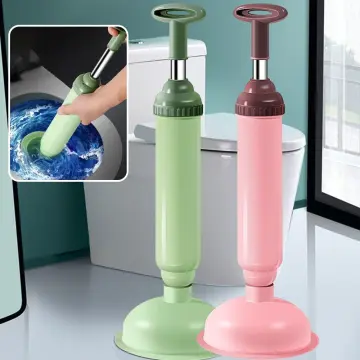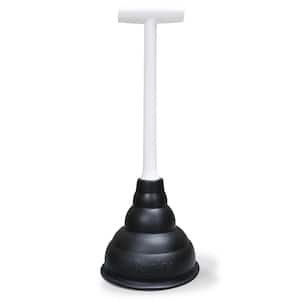Almost everyone is bound to have their own unique conception in relation to Tips on How to Effectively Use a Plunger.

Introduction
Appropriate upkeep of household drains is vital for avoiding clogs and making sure smooth water circulation. One of the trick tools in every property owner's toolkit is the bettor, together with different drainpipe cleaners created to take on stubborn clogs efficiently. This article discovers just how to utilize plungers and drainpipe cleaners effectively to keep your drains flowing easily.
Area 1: Recognizing Plungers
Sorts of Plungers
There are several sorts of bettors available, each made for different kinds of drains pipes and clogs. One of the most usual kinds include mug bettors, flange plungers, and accordion plungers.
Just How Plungers Job
Plungers deal with the concept of developing pressure and suction to displace blockages. When correctly applied over a drain, they produce a vacuum that can pull out debris or break up obstructions.
Picking the Right Bettor
Picking the right plunger depends on the type of drain and the nature of the clog. Cup plungers are perfect for sinks and tubs, while flange plungers are much better fit for bathrooms because of their design.
Common Blunders with Bettors
Preventing these mistakes ensures reliable plunging: inappropriate seal around the drain, insufficient pressure, and not clearing surrounding particles.
Section 2: Using Plungers Properly
Preparation
Before diving, ensure the bettor covers the drain entirely and develops a limited seal. Clear any kind of visible particles around the drain opening.
Technique
Begin with gentle diving activities to develop suction. Rise stress slowly, using a consistent rhythm. Repeat as necessary until the drainpipe gets rid of.
Troubleshooting Tips
If plunging doesn't function, attempt adjusting the seal, applying petroleum jelly for a much better seal, or utilizing a various sort of bettor.
Area 3: Comprehending Drainpipe Cleansers
Sorts Of Drainpipe Cleaners
Drain cleaners can be chemical or enzymatic. Chemical cleansers make use of strong chemicals to liquify clogs, while chemical cleansers make use of all-natural enzymes to break down raw material.
Exactly How Drainpipe Cleansers Work
Chemical cleaners react with obstructions to liquify them, while chemical cleaners break down organic materials like hair and oil without damaging pipes.
Safety Considerations
Constantly use gloves and eye protection when making use of chemical drainpipe cleaners. Ensure ample air flow and follow supplier directions thoroughly.
Eco-Friendly Alternatives
Consider utilizing vinegar and baking soft drink or enzyme-based cleaners for eco-friendly alternatives that are safer for pipelines and the environment.
Section 4: Making Use Of Drain Cleansers Effectively
Application Methods
Put chemical cleaners directly right into the drainpipe opening. Allow them to help the advised time prior to flushing with hot water. Chemical cleansers need to sit overnight.
Safety measures
Stay clear of blending various sorts of cleaners, as this can generate toxic fumes. Never ever use chemical cleaners combined with a plunger, as splashing can happen.
Managing Persistent Clogs
For relentless obstructions, take into consideration using a pipes serpent or calling a specialist plumber to stop damages to pipes.
Conclusion
In conclusion, understanding just how to utilize plungers and drain cleansers successfully is vital for maintaining healthy and balanced plumbing systems. By choosing the right devices and methods, homeowners can deal with minor obstructions and avoid significant plumbing concerns down the line.
How To Properly Use A Plumbing Snake To Clear Drains
When any drain clogs in our home arise, we tend to gravitate toward the plunger and little else. In cases where the plunger and its vacuum-created pressure are not able to clear clogs, many immediately move to harmful chemicals or simply call their plumber to fix the issue.
we’re happy to help with all drain cleaning needs and concerns. This includes informing you on a few other home remedies you may have at your disposal for minor to moderate clogs, one of which is the use of a plumbing snake. Many people have never used one of these before – let’s go over the steps to take when your drain clogs and you have a plumbing snake available.
Attempt Plunger Use
The first step here, as we noted above, should indeed be to grab your plunger when you notice a drain clog and attempt to resolve it this way. If you’re unsure how to use a particular type of plunger, our plumbers can answer any questions you have. If this doesn’t do the trick, however, you move on to the snake.
Locate And Prepare Snake
A plumbing snake is a metal or plastic device that’s generally about a quarter of an inch thick. It’s design with significant extensions, meant to reach down into your clogged drain and push the clog out. Snakes also contain drain augers that will latch onto and push stubborn blockages.
If your plunger doesn’t clear a clog, locate your snake and bring it to the drain in question. We also recommend keeping a bucket nearby to collect the clog once you pull it out, plus we’d advise wearing goggles and possibly protective gloves.
Feed Snake
Once you’re ready to go, feed the snake slowly down the drain, using the crank device it comes with to keep it moving until it finds the clog. Once this happens, much of the clog will be latched onto the coil so you can pull it out, while the rest will simply break up and flow downward.
Detach Debris
Remove the snake slowly from the drain, and once you’ve done so, pick off any debris that’s stuck to the coil. This is another area where wearing gloves is a must.
Flush Drain
Finally, take a few minutes to ensure the snake has done its job correctly. If you’ve been using it on a toilet, flush the toilet a couple times and make sure everything flows well. If you’ve used it on a different drain, flush it with some room temperature water.
https://www.mybuddytheplumber.com/blog/how-to-properly-use-a-plumbing-snake-to-clear-drains/

Application Methods
Put chemical cleaners directly right into the drainpipe opening. Allow them to help the advised time prior to flushing with hot water. Chemical cleansers need to sit overnight.
Safety measures
Stay clear of blending various sorts of cleaners, as this can generate toxic fumes. Never ever use chemical cleaners combined with a plunger, as splashing can happen.
Managing Persistent Clogs
For relentless obstructions, take into consideration using a pipes serpent or calling a specialist plumber to stop damages to pipes.
Conclusion
In conclusion, understanding just how to utilize plungers and drain cleansers successfully is vital for maintaining healthy and balanced plumbing systems. By choosing the right devices and methods, homeowners can deal with minor obstructions and avoid significant plumbing concerns down the line.
How To Properly Use A Plumbing Snake To Clear Drains
When any drain clogs in our home arise, we tend to gravitate toward the plunger and little else. In cases where the plunger and its vacuum-created pressure are not able to clear clogs, many immediately move to harmful chemicals or simply call their plumber to fix the issue.
we’re happy to help with all drain cleaning needs and concerns. This includes informing you on a few other home remedies you may have at your disposal for minor to moderate clogs, one of which is the use of a plumbing snake. Many people have never used one of these before – let’s go over the steps to take when your drain clogs and you have a plumbing snake available.
Attempt Plunger Use
The first step here, as we noted above, should indeed be to grab your plunger when you notice a drain clog and attempt to resolve it this way. If you’re unsure how to use a particular type of plunger, our plumbers can answer any questions you have. If this doesn’t do the trick, however, you move on to the snake.
Locate And Prepare Snake
A plumbing snake is a metal or plastic device that’s generally about a quarter of an inch thick. It’s design with significant extensions, meant to reach down into your clogged drain and push the clog out. Snakes also contain drain augers that will latch onto and push stubborn blockages.
If your plunger doesn’t clear a clog, locate your snake and bring it to the drain in question. We also recommend keeping a bucket nearby to collect the clog once you pull it out, plus we’d advise wearing goggles and possibly protective gloves.
Feed Snake
Once you’re ready to go, feed the snake slowly down the drain, using the crank device it comes with to keep it moving until it finds the clog. Once this happens, much of the clog will be latched onto the coil so you can pull it out, while the rest will simply break up and flow downward.
Detach Debris
Remove the snake slowly from the drain, and once you’ve done so, pick off any debris that’s stuck to the coil. This is another area where wearing gloves is a must.
Flush Drain
Finally, take a few minutes to ensure the snake has done its job correctly. If you’ve been using it on a toilet, flush the toilet a couple times and make sure everything flows well. If you’ve used it on a different drain, flush it with some room temperature water.
https://www.mybuddytheplumber.com/blog/how-to-properly-use-a-plumbing-snake-to-clear-drains/

We were shown that article on How To Use Your Toilet Plunger Correctly in 5 Easy Steps through someone on another web property. Enjoyed our content? Please share it. Help someone else find it. I recognize the value of reading our article about How to Unclog Your Sink with a Plunger.
Free Quote